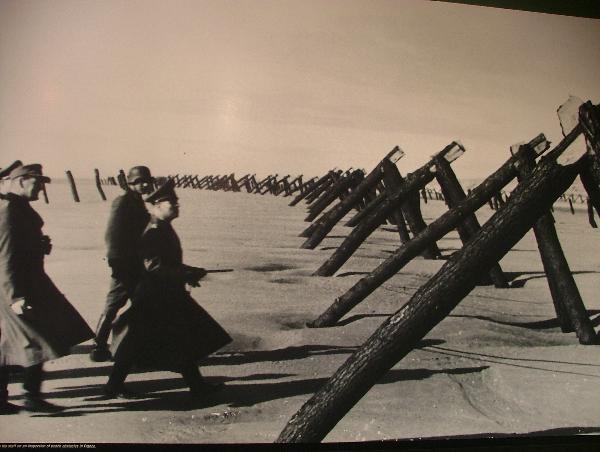
New Orleans, LA - National WWII Museum
Posted by:  JimmyEv
JimmyEv
N 29° 56.579 W 090° 04.214
15R E 782793 N 3316077
The excellent exhibits in this large museum brilliantly communicate the bravery, sadness, and heroism of the Allied Invasions of Normandy and the Pacific Islands, never flinching from showing the true cost of war.
Waymark Code: WM14Z7
Location: Louisiana, United States
Date Posted: 01/15/2007
Views: 81
Formerly known as the National D-Day Museum, the major focus of this museum remains the initiation of the major Allied invasions of World War II, otherwise known as ‘D-Days.’ Exhibits are broken down into four areas: the small Home Front Exhibit and three larger exhibits focusing on various D-Days in Europe and the Pacific.
The Planning of D-Day Exhibit covers the story behind ‘Operation Overlord,’ an elaborate ruse used to successfully convince the Nazis that the Allied invasion would take place at Pas-de-Calais, not on the beaches of Normandy. Exhibits bring to life the odds the Allies faced. The Nazis had created Fortress Europe all along the northwestern European coast, from France to Norway. Just getting to shore, anywhere, was an obstacle course of various types of mines and other torturous devices. One exhibit replicates a Nazi look out tower on the coast of France, complete with a view of the stormy English Channel. Another exhibit is a scale-model of a multi-level Nazi defense battery built into the French coast. At the same time, on the other side of the Channel, the entire island of Great Britain was seemingly turned into a huge military base full of Commonwealth and American troops, preparing to invade Europe, somewhere.
This exhibit segues into the main Normandy D-Day Exhibit. The breadth of the invasion was amazing, the largest armada ever assembled, a seemingly endless sea of ships and planes crossing the English Channel, so large it was said you could walk across the channel by hopping from ship to ship. When the ships reached shore, troops and equipment deployed using the Higgins Boat, a product of the war developed in New Orleans with a design based upon the Cajun flat boats that had been used for centuries to ply the bayous of Southwestern Louisiana. One exhibit carefully recreates the feeling of landing (after being dropped from a plane) in the midst of France at night.
The most moving exhibits are the photographic images from the Normandy Beach landings. American forces landed at Utah and Omaha Beaches. The Omaha Beach landing was the bloodiest, with the largest number of casualties. The Commonwealth forces had better luck with their landings at Gold, Juno and Sword Beaches.
After the Nazi surrender, the exhibits turn to the Pacific front of the war. The first portion of the exhibit details how both American and Japanese propaganda villified the ‘other’ race, something that hadn’t occurred on the European front. Photographs show the brutality of each D-Day on each island in the Pacific (and it seems like there were dozens). There were an enormous number of casualties to both Americans and Japanese. Towards the end of the war, Japanese civilians were fire bombed as whole towns were destructed. You would think the photographs of the firebombed towns were taken after an atomic bomb, but they weren’t. That came later. The final exhibit details the decision, rationale and use of the atomic bomb to end the war and stop the killing.
Speeches, lectures and movies are shown on the first floor, in the Louisiana Memorial Pavilion, and there is a rather large gift shop selling all kinds of things related to World War II. If you get hungry or thirsty, a PJ’s Coffeeshop is accessible from inside the museum.
